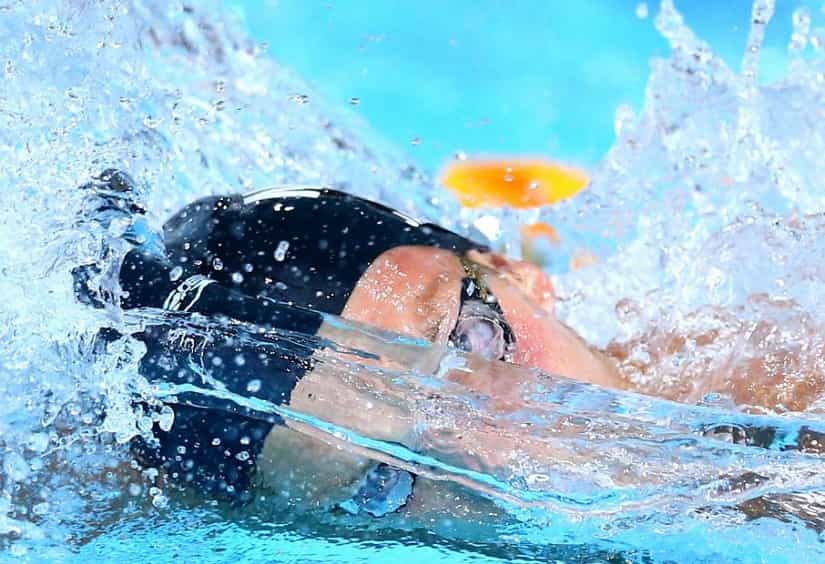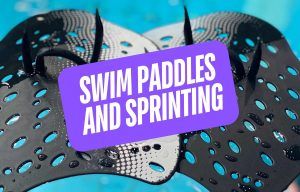You never thought it would happen to you… Or at the very least, you thought you would never have to experience it again.
And yet… here we are.
Hunched over with feet dangling in the hot tub, an ice pack saddling your shoulder, watching your teammates from across the pool as they cruise through the main set without you.
Swimmer’s shoulder, the umbrella term for the collection of shoulder injuries that happen from swim training.
It’s a crappy feeling, and something I have covered recently where we discussed the psychological toll that occurs from being a chronically injured swimmer.
But fear not.
There is hope.
Here are a few ways to maintain your fitness levels and feel for the water while your shoulder is on the mend:
1. Warm-up while wearing fins.
Swimmers log a lot of miles over the years. During some weeks likely more than you walk. It’s no wonder that we end up with swimmer’s shoulder.
An easy way to lessen the burden on your shoulders over the long term–and when you feel pain starting to seep in–is to implement fins into your warm-up.
Doing so helps lessen the work load your shoulders have to carry, and saves them for the critical sets. Adding swim fins to your swim training is fun, gets your legs in shape, and allows you an opportunity to properly and thoroughly warm-up your shoulders before unleashing some main set fury on them.
2. Do more vertical kick and less paddles.
One of the common causes of shoulder pain aggravation was when using swim paddles or when using a kickboard according to research.
You can very easily substitute the board for kicking with a swimmer’s snorkel with arms at your side, or like I prefer to do, do some vertical kicking, which is endlessly versatile (you can even substitute strapping on a buoyancy belt and do some water jogging in the deep end).
While you are setting aside the board, feel free to do the same thing with your paddles.
Although swim paddles are a helpful training accessory for developing power, they also place a lot of stress on the ligaments in your arms, making an already injured area even more vulnerable for further injury.
3. Pivot the dryland.
As a swimmer you know how important it is to swim with proper technique. And yet, when it comes to doing the workouts we do outside of the water to improve swim performance, we don’t always have that same focus on technique and fundamentals.
While injured you should limit overhead movements like shoulder extensions and pull-ups, as you are already getting more than your fair share of shoulder-centric work in the pool.
As covered in this guide to fixing and preventing swimmer’s shoulder, steer your dryland work towards stabilizing your core and scaps. Dryland gives you the opportunity to stay in shape by pivoting to the strength exercises for swimmers that you can do, whether that means doing unilateral pulls with a set of Stretch Cordz or spending more time jumping rope.
4. Get back to basics.
One of the most overlooked aspects of dealing with the dreaded swimmer’s shoulder isn’t the physical symptoms, which are ever-present and impossible to ignore, but the technical issues in our swimming that got us into trouble in the first place.
Being injured is a great time to get back to the fundamentals of technically-proficient swimming.
After all, the pain that comes from swimmer’s shoulder isn’t just from overuse, it’s from overuse with bad form.
There are two massive upsides to cleaning up your technique: one, you will get injured much less frequently, and two, you will swim more efficiently and faster in the long run.
Win-wins don’t come any more winn-ey than that.












